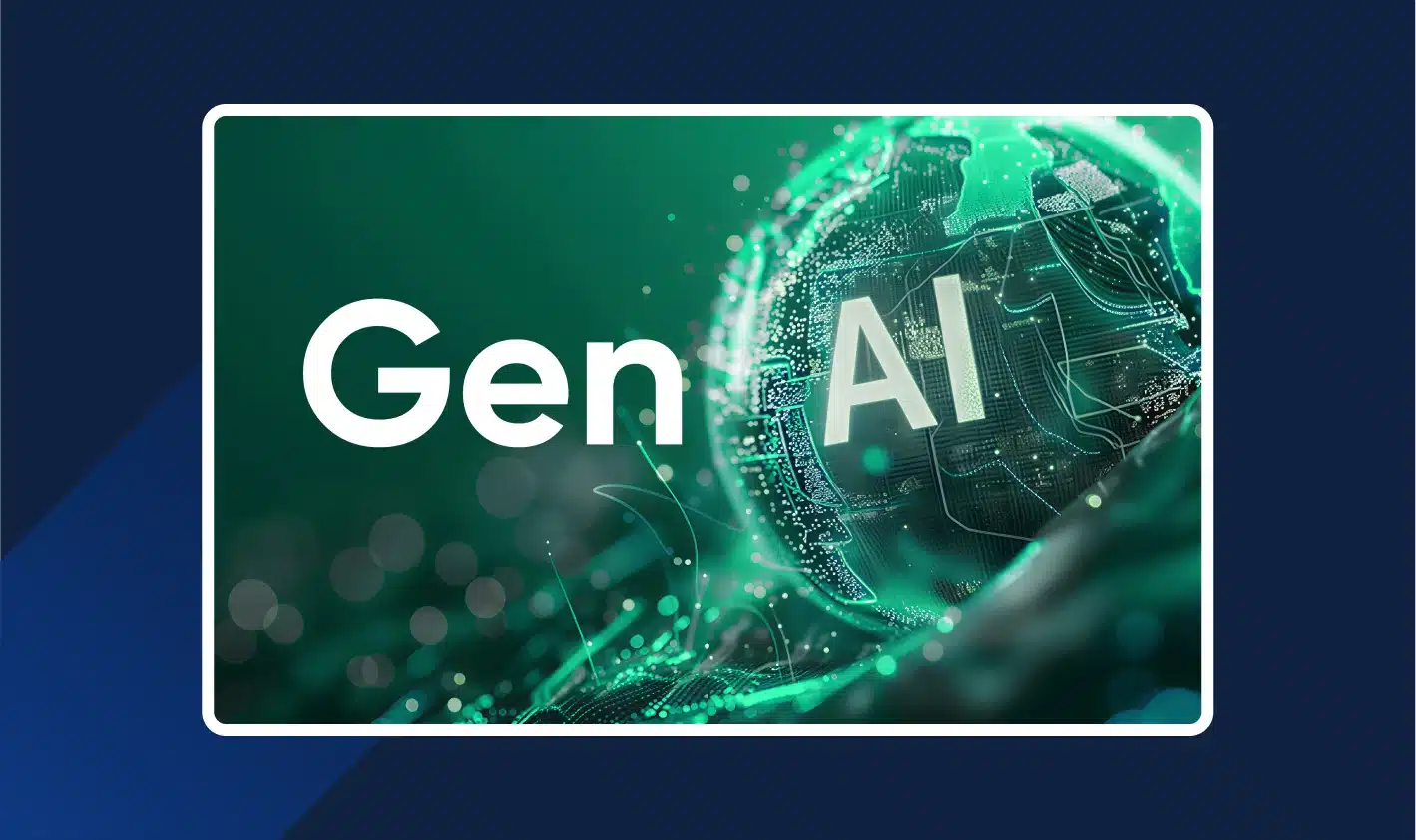
We’ve seen a flood of AI features: smart replies, AI search bars, automated notes. Helpful? Sure. Durable? Not really. Features come and go. Platforms survive because they compound value – across teams, use cases, and time.
Let us explain.
Features are sprints; platforms are seasons
A single GenAI feature can get quick wins. But most organizations stall when they try to scale the fifth, seventh, or tenth feature. Why? Every add-on brings new integrations, security checks, governance reviews, monitoring, and support load. That friction adds up and, at some point, slows delivery to a crawl.
A platform flips the script. You standardize data access, compliance, monitoring, and model operations once, then reuse them everywhere. That’s how you keep shipping without breaking things. A global firm that consolidated six AI features onto one enterprise GenAI platform cut annual TCO from ~$770,000 to ~$410,000 and shortened new feature launches from eight weeks to ten days. The gain didn’t come from a “smarter” feature; it came from reuse and control at the platform layer.
Adoption is high. True production is not.
There’s real momentum. Roughly 65%–71% of US enterprises report regular GenAI use in at least one function in 2025. But only ~6%–11% run GenAI at mature, scaled levels. The majority sit in pilots or limited rollout, often for months.
The timeline tells you more: getting from pilot to full production typically takes 7–12 months. One in four projects slips by up to a year due to data quality, integration gaps, missing MLOps, skill shortages, or business misfires. A few mid-market leaders do it in ~90 days, but they’re the exception.
Read between the lines. What separates the few that ship fast? Not individual features. Platform readiness—clean pipelines, shared services, and clear guardrails.
Cost gravity lives in the platform
If you’ve tried to budget a “simple” GenAI rollout, you know the line items: inference, vector database, embeddings, observability, and human review (HITL). For mid-to-large US deployments, typical monthly ranges look like this:
- Inference: $7,000–$40,000
- Vector database: $2,000–$10,000
- Embeddings: $500–$2,500
- Observability/monitoring: $1,000–$5,000
- Human review: $2,000–$10,000
All-in, a large enterprise can spend $30,000–$80,000 per month on core runtime and HITL, with Fortune-500-scale programs going well beyond $100,000 once talent and compliance are included.
Here’s the thing: point features force you to repeat these costs and controls across teams. A platform centralizes them. You still pay for inference and storage, but you stop paying the “integration tax” ten times over. That’s why platform costs often decline on a per-use-case basis as you add more workloads.
The strongest ROI shows up where platforms thrive
Customer support is a good stress test. With GenAI agents in place, leaders report 45%–53% ticket deflection across retail, IT, and business services. A top retail example hit 53% deflection, cut first response from 12 minutes to 12 seconds, and reached 99.05% CSAT. That’s not a rounding error; that’s a service model shift.
Time metrics move, too. Resolution times drop from 32 hours to 32 minutes in best-run teams, with 13.8% more inquiries handled per hour and up to an 87% cut in total resolution times. First responses often fall below four minutes.
And cost per contact? AI chat sits near $0.50 per session vs. ~$6.00 for a human agent—a 12x difference. Many programs show ~25% lower total service costs within months.
But here’s the caution: these outcomes are durable only when shared assets—knowledge retrieval, feedback loops, red-team tests, monitoring—live in a platform. Otherwise, quality drifts, models regress, and savings fade.
Governance isn’t paperwork. It’s the platform’s backbone.
US firms are rallying around the NIST AI Risk Management Framework (AI RMF). The most practical pattern I see is simple: GOVERN, MAP, MEASURE, MANAGE—baked into the platform, not stapled on later.
- GOVERN: define accountable owners, inventory systems by risk, review third-party models and APIs.
- MAP: trace data flows and stakeholders; classify use cases by risk; document context and constraints.
- MEASURE: track accuracy, latency, fairness, uptime; log inputs/outputs; run adversarial tests.
- MANAGE: set risk thresholds and HITL gates; keep incident playbooks; audit changes on a schedule.
This isn’t a theory. A North American services firm operationalized NIST AI RMF in six weeks to launch an AI chat assistant with the right controls. Meta’s Open Loop program tested the Generative AI Profile with 40 US companies to pressure-test real-world governance. California’s guidance maps closely to NIST principles—transparency, fairness, privacy, accountability.
Bottom line: BUILD GOVERNANCE INTO THE PLATFORM. You’ll move faster and lower risk at the same time.
What about model sprawl, multi-vendor stacks, and the “new model every quarter” problem?
A platform copes better with change. It abstracts model choice, supports retrieval and evaluation in one place, and standardizes logs and traces. That makes swaps—OpenAI to Anthropic to open-source—less painful. It also helps finance teams predict spend because traffic, not heroes, drives cost. Inference scales with user volume and prompt size; vector stores scale with knowledge size and read/write rates. With shared observability, you can see and tune both.
A quick mental model for leaders
Think in layers, not features:
- Data & Retrieval — shared connectors, PII handling, vector store, lineage.
- Models & Tools — model registry, prompt libraries, guardrails, evaluation.
- Operations — monitoring, tracing, cost tracking, deploy pipelines, rollback.
- Controls — NIST AI RMF, HITL thresholds, incident playbooks, audits.
- Experience — the actual features users see.
When the first four layers live in a platform, the fifth layer (features) gets easy. When they don’t, every feature is a snowflake.
The quiet KPI: time-to-second-feature
Most teams can ship their first AI feature. The test is how quickly you ship the second and third without new review committees, security exceptions, and one-off logs. Centralized platforms cut time-to-value 3–5x by reusing pipelines, governance, and observability. That’s your compounding effect.
What to do next (no fluff, just moves)
- Start a platform track, even if small. Stand up shared retrieval, logging, and evaluation early. Costs will be more predictable: mid-scale programs often land at $12K–$30K/month; large ones at $30K–$80K+ for core runtime and HITL.
- Stop duplicating controls. Centralize observability (tracing, drift, latency) and HITL. It’s cheaper than repeating it team by team.
- Bake in NIST AI RMF. GOVERN-MAP-MEASURE-MANAGE as platform services, not checklists. Regulators are watching AI claims; you need evidence, disclosure discipline, and audit trails.
- Track the real ROI levers. Ticket deflection %, AHT, CSAT, cost per contact, and model switchability. These metrics move when the platform is healthy, not just the feature.
- Design for change. Assume new models and policies will show up quarterly. Platform abstractions make that a non-event.
The payoff
GenAI features can impress in a demo. But features fade if they’re built on brittle plumbing. Platforms carry the load: lower per-use-case cost, faster delivery, cleaner governance, and resilience when models, rules, and demand shift.
If you’re a CEO or CIO asking where to place the big bet, place it on the platform. Features will follow—and they’ll stick.
Book a 45-minute PLATFORM READINESS SESSION. We’ll outline your first 3 shared services, a 60-day rollout plan, and the KPIs to track (deflection %, AHT, cost per contact). Schedule your session contact@amazatic.com

